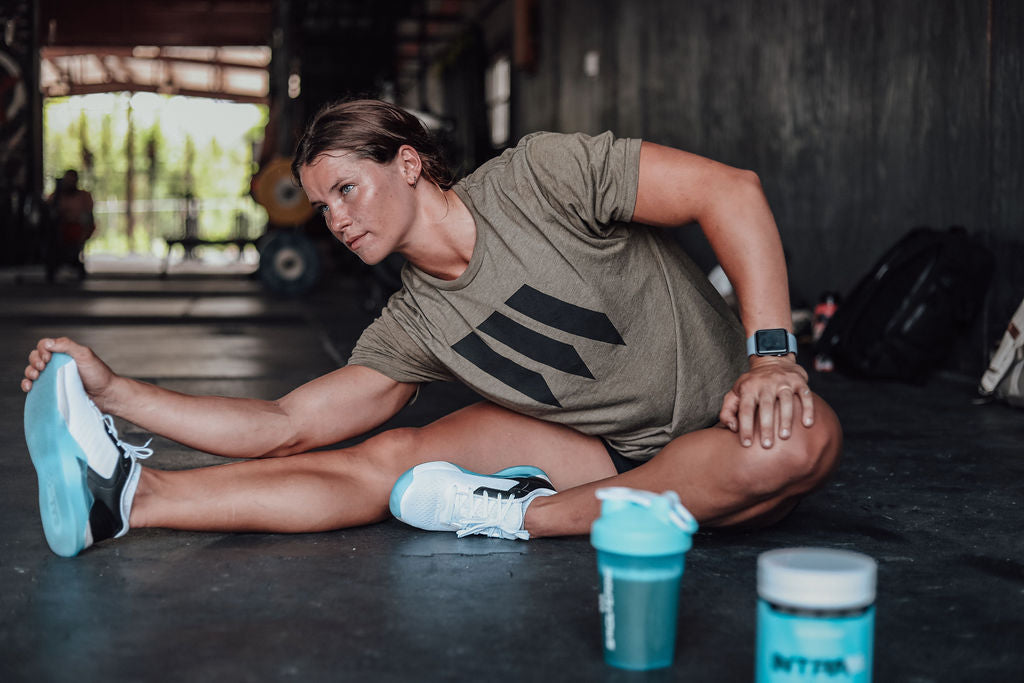Tendon and ligament injuries are notoriously frustrating—slow to heal, prone to re-injury, and often resistant to conventional therapies. Whether you're dealing with a nagging case of tendinitis, a strained ACL, or simply trying to bulletproof your joints for performance, you’ve likely heard of BPC-157.
Promoted as a regenerative powerhouse, BPC-157 is gaining attention in fitness, rehab, and longevity circles for its reported ability to accelerate soft tissue healing. But does the science live up to the hype, especially when it comes to tendon and ligament repair?
In this article, we’ll break down how BPC-157 works, what the research actually says, and whether it belongs in your recovery stack—or on the shelf. We’ll also compare it to TB-500 and explore natural recovery aids like collagen and L-glutamine to help you make an informed decision.
What Is BPC-157?
BPC-157, or Body Protection Compound-157, is a synthetic peptide consisting of 15 amino acids. It’s derived from a protective protein found in human gastric juice, originally researched for its role in protecting and healing the gut lining. But its benefits appear to go far beyond digestion.
BPC-157 is classified as a pentadecapeptide, and it works by accelerating the body’s natural repair processes. What makes it unique is its ability to affect multiple systems—musculoskeletal, gastrointestinal, and nervous—often without the inflammatory delay common with other healing compounds.
While it is not FDA-approved for medical use, it has gained popularity in the performance and recovery world for its reported effects on:
→ Tendon and ligament repair
→ Joint pain relief
→ Gut lining protection
→ Muscle recovery and regeneration
To learn more about BPC-157’s full range of potential benefits and its classification as a research compound, see What Is BPC-157?
How BPC-157 Works for Healing
BPC-157’s healing potential lies in its ability to stimulate angiogenesis—the formation of new blood vessels. This is crucial for tendons and ligaments, which typically suffer from poor blood flow and therefore heal very slowly. Unlike muscle tissue, these structures don’t get the same vascular supply, making recovery much harder and often incomplete without intervention.
Research suggests BPC-157 promotes healing by:
→ Increasing fibroblast activity, which enhances collagen production and tissue regeneration
→ Accelerating revascularization, improving nutrient delivery and oxygenation at the injury site
→ Regulating nitric oxide pathways, helping reduce inflammation and oxidative damage
→ Stabilizing growth factor signaling, including VEGF and FGF, which are key players in tissue remodeling
Animal studies have shown BPC-157’s regenerative effects on:
→ Partially torn Achilles tendons
→ Injured medial collateral ligaments (MCL)
→ Damaged quadriceps muscles and tendon junctions
→ Tendon-to-bone reconnection after surgical injury
BPC-157 accelerates the healing of transected rat Achilles tendon and induces expression of eNOS and VEGF – Gavrilović, Journal of Orthopaedic Research
This multi-level healing response gives BPC-157 an edge in treating tough connective tissue injuries that often don’t respond to traditional methods.
For more on its mechanisms and broader recovery effects, see Unlocking the Healing Power of BPC-157.
Scientific Evidence: What the Research Says
While BPC-157 hasn’t yet been widely studied in large-scale human clinical trials, animal research offers compelling evidence of its regenerative potential—especially in soft tissue injuries like tendons and ligaments.
In rodent studies, BPC-157 has demonstrated accelerated healing in:
→ Transected Achilles tendons, where healing occurred more rapidly and with stronger structural integrity
→ Medial collateral ligament (MCL) injuries, showing improved tensile strength and vascularization
→ Tendon-to-bone reattachment, such as in quadriceps tendon detachment models
→ Corticosteroid-damaged tendons, where BPC-157 reversed degradation and collagen breakdown
BPC-157 enhanced healing in rat models of Achilles tendon rupture, inducing early angiogenesis and promoting growth factor activity at the injury site – Pavlovic, Current Pharmaceutical Design
Another study found that BPC-157 significantly improved the structural organization and density of collagen fibers—crucial for long-term tendon strength and flexibility.
BPC-157 supports organized collagen formation and fibroblast activity in injured ligament tissue – Perovic, Journal of Orthopaedic Research
While human data is currently limited to anecdotal use in bodybuilding, physical therapy, and sports performance circles, the biological plausibility and consistent outcomes in animal models have made BPC-157 one of the most promising peptides in connective tissue regeneration.
Real-World Results: What Users Report
Beyond the lab, BPC-157 has carved out a loyal following among athletes, bodybuilders, and individuals recovering from stubborn soft tissue injuries. While anecdotal, these user reports often align closely with what’s been observed in animal models.
Common user-reported outcomes include:
→ Faster recovery timelines from tendon and ligament injuries (e.g., sprains, tears, tendinitis)
→ Reduced joint pain and inflammation, especially in chronic overuse cases
→ Improved mobility and function, even after prolonged downtime
→ Noticeable benefits when combined with physical therapy or structured rehab protocols
Many report using BPC-157 alongside TB‑500 for a synergistic approach to healing dense connective tissues, especially when muscle, tendon, and fascia are involved.
“I used BPC-157 and TB-500 for a chronic shoulder injury. Within 3 weeks, the pain was cut in half and my mobility was back. This would’ve taken months with PT alone.”
While these testimonials are not scientific evidence, the sheer volume of consistent reports makes it clear that many users experience noticeable improvements, especially when BPC-157 is used in a well-structured recovery strategy that includes collagen, L-glutamine, and strength training rehab.
How to Use BPC-157 for Tendon and Ligament Repair
When it comes to dosing BPC-157 for soft tissue healing, most users follow injectable protocols, although oral forms are also growing in popularity. The key difference lies in localization—injectables are thought to deliver higher concentrations directly to the injury site.
Common BPC-157 Injection Protocol
→ Dose: 200–500 mcg per day
→ Frequency: Daily, for 2–4 weeks
→ Administration: Subcutaneous (typically near the injury site) or intramuscular in some cases
Some advanced users split the dose (e.g., 250 mcg AM + 250 mcg PM) for consistent saturation.
For longer injuries or chronic inflammation, extended cycles of 6–8 weeks may be used, followed by a taper or break.
Note: Always use sterile injection technique and consult a qualified medical provider before beginning any peptide protocol.
Oral BPC-157
Oral versions—often encapsulated or in enteric-coated forms—are more convenient but may have reduced bioavailability for tendon-specific repair. They are more commonly used for gut healing and systemic inflammation.
That said, some users still report success with oral BPC-157 for general joint and tendon health, especially when paired with other foundational supplements like glutamine and collagen.
→ For a full breakdown of delivery forms, see Best Forms of BPC‑157: Injectable vs Oral vs Capsules Explained
What to Stack with BPC-157 for Faster Recovery (Expanded)
→ TB‑500
Why it pairs well:
TB‑500 (Thymosin Beta-4) works systemically to improve cellular repair, reduce inflammation, and promote the migration of immune cells and actin-binding proteins to damaged areas. While BPC-157 primarily stimulates angiogenesis and localized healing, TB-500 extends that recovery to a broader systemic level.
Key Benefits with BPC-157:
-
Enhances muscle and tendon flexibility
-
Promotes faster post-surgical repair
-
Reduces fibrosis (scar tissue formation)
-
Addresses multi-site inflammation (systemic healing)
This stack is often used by athletes with chronic joint pain, multiple tendon injuries, or after procedures like rotator cuff surgery or ACL reconstruction.
Learn more about how they work together in TB500 vs BPC 157: Unveiling the Ultimate Healing Peptides.
→ CJC-1295 + Ipamorelin
Why it pairs well:
This growth hormone–releasing stack enhances natural GH secretion, leading to increased IGF-1 production, which plays a crucial role in cellular repair and collagen regeneration. CJC-1295 provides a longer GH pulse, while Ipamorelin is gentler with fewer side effects like cortisol or hunger spikes.
Key Benefits with BPC-157:
-
Improves sleep and recovery during REM cycles
-
Increases IGF-1 for ligament and cartilage regeneration
-
Enhances muscle tissue repair and lean mass retention
-
Boosts collagen synthesis, supporting long-term joint resilience
Ideal for stacking when recovering from repetitive strain injuries, joint degradation, or tendonitis, where deeper structural repair is needed.
For the ideal peptide pairing breakdown, see CJC-1295 vs Ipamorelin: Best Growth Peptide Combo?
→ MK-677 (Ibutamoren)
Why it pairs well:
MK-677 is a long-acting oral secretagogue that stimulates continuous GH and IGF-1 release. This makes it an ideal complement to BPC-157 for long-term recovery, especially after major muscle tears or full-body inflammation.
Key Benefits with BPC-157:
-
Preserves muscle mass during injury-induced inactivity
-
Increases bone mineral density over time
-
Accelerates recovery post-training or surgery
-
Supports connective tissue strength and elasticity
MK-677 is often added to a recovery stack to maintain lean body mass and metabolic function during downtime, making it popular with competitive lifters, CrossFit athletes, and older individuals healing from injury.
Recovery Supplements That Work Well with BPC-157
→ Collagen Protein
Collagen peptides provide the amino acids—especially glycine, proline, and hydroxyproline—required to rebuild connective tissues like tendons, cartilage, fascia, and ligaments.
Why it’s essential:
BPC-157 stimulates fibroblast activity and collagen production. But if your body doesn’t have the raw materials, regeneration stalls.
Use daily, especially post-injury or alongside physical therapy, to reinforce tissue remodeling.
For optimal synergy, combine collagen with vitamin C and light mechanical loading (movement or rehab work) to stimulate collagen crosslinking.
→ L-Glutamine
Glutamine is a conditionally essential amino acid that plays a key role in wound healing, gut integrity, and immune modulation.
Why it matters with BPC-157:
-
Supports gut lining repair when stacking with oral BPC-157
-
Enhances nitrogen retention and muscle tissue regeneration
-
Reduces inflammation in soft tissue and joints
-
Supports immune health during recovery phases
Especially useful when healing from surgeries, intense training, or using peptides that stimulate systemic repair.
→ Probiotix
BPC-157 has been shown to protect and rebuild the gastrointestinal lining, making gut health stacks incredibly useful when the peptide is taken orally.
Why stack it with BPC-157:
-
Helps restore microbiome diversity
-
Aids in nutrient absorption and peptide bioavailability
-
Supports immune resilience during recovery
-
May enhance BPC-157 effectiveness for ulcers, IBS, and leaky gut
A BPC-157 + probiotic combo is a foundational strategy for anyone using peptides for digestive repair, especially when paired with glutamine.
Side Effects and Safety Considerations of BPC-157
BPC-157 is widely regarded as one of the safer peptides used for healing, especially due to its origin in human gastric proteins and its anti-inflammatory, tissue-regenerating profile. However, as with any performance-enhancing compound, especially one that isn’t FDA-approved, there are still important safety considerations to keep in mind.
Known and Reported Side Effects
Most anecdotal and experimental use shows that BPC-157 is well-tolerated, even at higher doses. But some users do report mild side effects, including:
→ Headaches or dizziness (typically at higher doses or when stacking with GH-related peptides)
→ Injection site irritation, redness, or swelling
→ Nausea or GI discomfort when taken orally (more common with low-quality forms)
→ Changes in mood or energy, including restlessness or mild anxiety
These symptoms are usually temporary and resolve quickly with dosage adjustment or cycling off. To reduce risks, ensure you’re sourcing high-purity peptides and maintaining sterile injection technique.
Lack of Human Trials
One of the major safety limitations of BPC-157 is the absence of large-scale, peer-reviewed human trials. While there’s a substantial body of animal research supporting its regenerative effects, we do not yet have conclusive clinical evidence to guarantee long-term safety or efficacy in humans.
Still, many in the performance and injury rehab communities use BPC-157 off-label for:
→ Chronic tendinopathies
→ Joint degeneration
→ Gut permeability
→ Accelerated post-surgery rehab
"Despite limited clinical trials, the number of consistent anecdotal reports and supporting animal research is what drives interest in BPC-157," notes Irrgang and colleagues, Orthopaedic Journal of Sports Medicine.
Contraindications and Cautions
→ Pregnant or breastfeeding individuals should avoid BPC-157, as no data supports safety in these populations.
→ Those with cancer or active tumors should consult a physician before using growth-promoting peptides.
→ Anyone with underlying autoimmune or inflammatory conditions should use caution, as immune modulation may interact unpredictably.
Tips for Safe Use:
→ Start with the lowest effective dose (e.g., 250 mcg/day)
→ Monitor for changes in blood pressure, sleep, energy, or GI function
→ Use only pharmaceutical-grade peptides from reputable research suppliers
→ Consider adding L-glutamine and Probiotix for gut health if you notice any digestive effects
When used responsibly, BPC-157 has a strong anecdotal and preclinical safety profile, particularly when integrated with supportive supplements like collagen, L-glutamine, and joint-friendly recovery tools.
Conclusion: Should You Use BPC-157 for Recovery?
If you're dealing with stubborn joint pain, a tendon injury, post-surgical rehab, or gut dysfunction, BPC-157 offers a compelling, research-supported path to faster and more complete recovery. While still in the research peptide category, its safety profile and broad healing capabilities make it one of the most versatile tools for athletes, active individuals, and anyone aiming to optimize tendon or ligament repair.
BPC-157 is not a miracle fix—but when combined with the right strategy, it can significantly shorten downtime and improve tissue resilience. Whether you're healing from an injury, managing inflammation, or enhancing recovery from training, it deserves a place in your recovery toolkit.
The Best BPC-157 Stacks for Recovery
-
TB‑500: Excellent for systemic tissue regeneration and complementing local BPC-157 healing effects
-
CJC-1295 + Ipamorelin: Supports deep recovery via enhanced natural growth hormone and IGF-1 release
-
MK-677: Helps maintain muscle mass and accelerate total-body healing
-
Collagen Protein: Supplies the essential building blocks for connective tissue, tendons, and ligaments
-
L-Glutamine: Supports tissue regeneration and gut healing
-
Probiotix: Enhances microbiome health and gut-related benefits of oral BPC-157
By combining BPC-157 with these targeted stacks and nutritional support, you're not just masking pain—you’re rebuilding from the inside out.
→ Ready to dive deeper? Explore the Ultimate Guide to a BPC-157 Cycle to begin your recovery journey.







